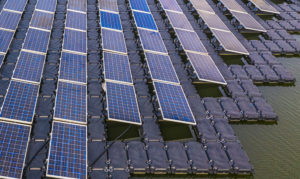 Although COVID-19 put the brakes on the annual EnergyWhiz event and Earth Day celebration at FSEC Energy Research Center in Cocoa this year, there are many ways to celebrate Earth Day’s 50th Anniversay while also meeting social distancing guidelines.
Although COVID-19 put the brakes on the annual EnergyWhiz event and Earth Day celebration at FSEC Energy Research Center in Cocoa this year, there are many ways to celebrate Earth Day’s 50th Anniversay while also meeting social distancing guidelines.
FSEC offers several free online activities and fun experiments that students, teachers, and parents can do right from their homes.
- Did you know that you could cook without electricity or fire? Learn how to make several different solar ovens using simple materials.
- Did you ever wonder how people used to tell time without a clock or watch? Learn to make two different sundials.
- Do you know how to purify water using only a few simple materials? Discover how easy it is to learn one way to be self-sufficient.
- Do you need to relax and be creative at the same time? Feel free to color outside the lines of an environmentally-focused coloring book:
- Planet Janitor. This English/Spanish edition
 environmental coloring book illustrates how the world is in our hands.
environmental coloring book illustrates how the world is in our hands.
- Take a Trip to Clean Air. This environmental coloring book explores the various alternative fuels available for transportation.
- TEACHERS: Did you know FSEC offers a solar curricula for students in grades K-2, 3-5, 6-8, and 9-12 that meets Florida State Standards?
Learn about these activities and more at: http://www.energywhiz.com/
EnergyWhiz—a renewable energy-focused event for students to demonstrate their science, technology, engineering, art and math (STEAM) capabilities through project-based learning activities—will be back next year, shining a light on student creativity, ingenuity and teamwork. Mark your calendars for April 24, 2021. Learn more at: www.fsec.ucf.edu/go/energywhiz.


